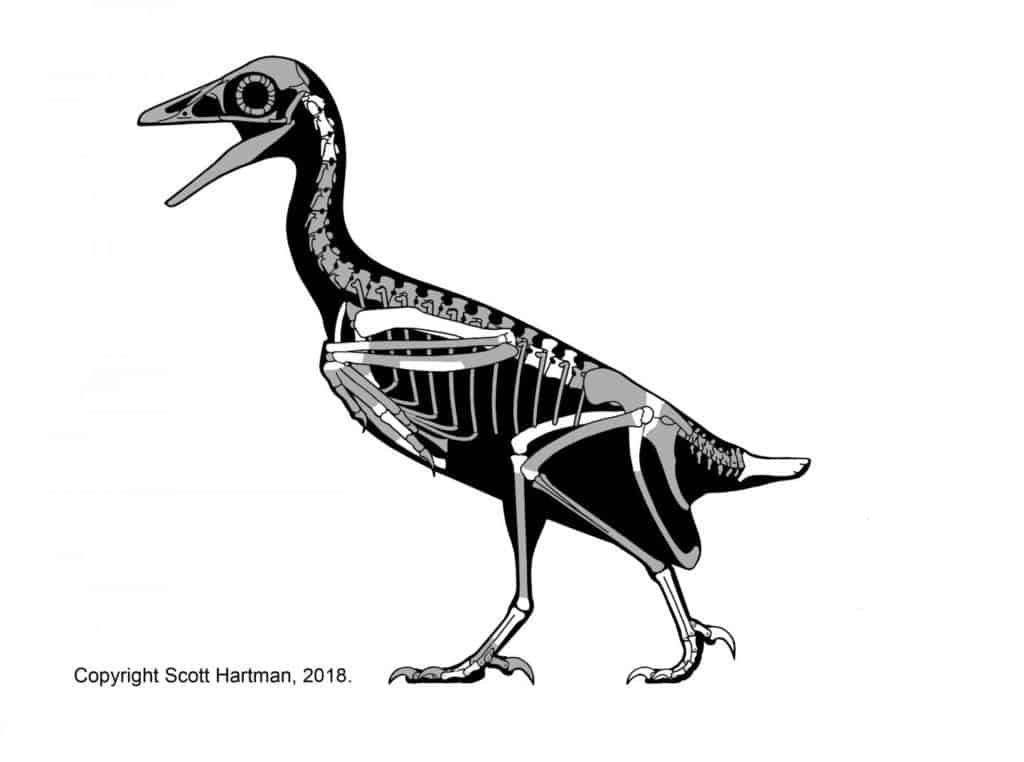Today’s rich avian diversity arose from just a few birds that survived the cataclysm that wiped out the dinosaurs. However, scientists think that before the massive extinction, ancient bird species were already as abundant as the modern variety. What’s more, a new study suggests that the now-extinct cousins of birds were also sophisticated, being equipped with the biological machinery for advanced flight.

According to overwhelming geological evidence, an asteroid roughly 10 km (6 miles) across hit Earth about 65 million years ago. In the aftermath, debris spewed into the atmosphere blocked the sun, severely altering global climate for many years, leading to the extinction of about 75% of the species that existed at the time. This included all species of dinosaurs, but also most birds. Some scientists think that all birds alive today can trace their roots to just a few surviving ancestors — probably small ground-dwellers, like quail, according to one study.
The little we know about avian life prior to the mass extinction comes from a few fossils such as the Archaeopteryx, whose panoply of feathers and skeletal layout were flattened in sandstone. A similar pancake preservation pattern is seen in most fossils of a group called enantiornithines — the most abundant and diverse bird group of the prehistoric period. Almost all enantiornithines retained teeth and clawed fingers on each wing but were in all other respects like modern birds. Now, researchers have come across the first enantiornithines fossils that are preserved in three dimensions, offering an unprecedented glimpse into the extinct avian group’s anatomy.
The 75-million-year-old fossils belong to a newly described species called Mirarce eatoni (‘Mirarce’ is Latin for ‘wonderful’, a homage to the detailed preservation of the fossil, while Arce refers to the mythical winged messenger of the Titans). The almost complete skeleton — only the head is missing — was initially unearthed in 1992 from the rugged badlands of the Kaiparowits formation in the Grand Staircase-Escalante National Monument in Garfield County, Utah. However, it wasn’t until 2009 that the finding was shown to be significant, after Jessie Atterholt, then a doctoral student at the University of California, Berkley, asked to examine the fossils.
Atterholt teamed up with Howard Hutchison, the paleontologist who first found the fossils, and Jingmai O’Conner, a leading expert on enantiornithines, to describe Mirarce eatoni in a new study published in the journal PeerJ. The remarkable findings show that enantiornithines, despite representing a completely separate lineage from modern birds, evolved some of the same adaptations for advanced flight — at least those that lived in the late Cretaceous.

The conclusion rests on the discovery of quill knobs, which are sizable patches on the forearm bones. In modern birds, quill bones anchor the wing feathers to the skeleton in order to sustain active flight. Mirarce‘s breastbone is also more deeply keeled than other enantiornithine species, implying larger flight muscles. Lastly, the wishbone — the flexible bone that stores energy during a wing stroke — follows a V-shape, like in modern birds, unlike the U-shape encountered in earlier avians and dinosaurs. All of these features suggest that this particulars enantiornithine bird was a very strong flier.
“One of our main challenges was being able to compare the anatomy of Mirarce to other Late Cretaceous enantiornithines, since most are represented by just one or two-foot bones whereas we have bones from most of the skeleton,” Atterholt told ZME Science. “I remember how cool it was when I noticed that we had an axis (the second neck vertebra). Also, noticing the large, rough patches of bone on the ulna and realizing they were quill knobs (to anchor feathers during flight) for the first time in an enantiornithine was a big “Aha!” moment,” she added.
It’s remarkable that enantiornithines, although distinct from modern birds, independently evolved very similar features adapted to active flight.
“For me, the most exciting part of this research that I’d like to share it the story of how enantiornithines evolved adaptations for advanced flight (like a narrow wishbone and quill knobs) independently of modern birds. It tells such a cool evolutionary story!” said Atterholt.
But if they were so successful, why did they go extinct? The leading hypothesis is that enantiornithines, which climbed and perched trees, were left without a habitat after the asteroid impact destroyed forests around the world. The ancestors of birds, on the other hand, also included ground-dwelling birds that were able to survive the onslaught.
“There is growing evidence that widespread wildfires after the Chixulub crater impact destroyed massive amounts of forest habitat, and we think that’s where many enantiornithines were living. Many seem to have adaptations for living in trees. On the other hand, many of the modern birds to survive were aquatic or ground-dwelling birds,” Atterholt told me.
In the future, the researchers plan on studying the ecomorphology of the bird, in order to tell for sure whether it was perching, climbing, or predatory.
“Also, I think it’s critical to recognize that this is one of the thousands of important fossils discovered in Grand Staircase Escalante National Monument, and it is fossils like this that will be under threat of damage and theft if and when the size of the park is reduced. It’s a powerful reminder that we need to fight to protect our natural resources,” Atterholt concluded.


